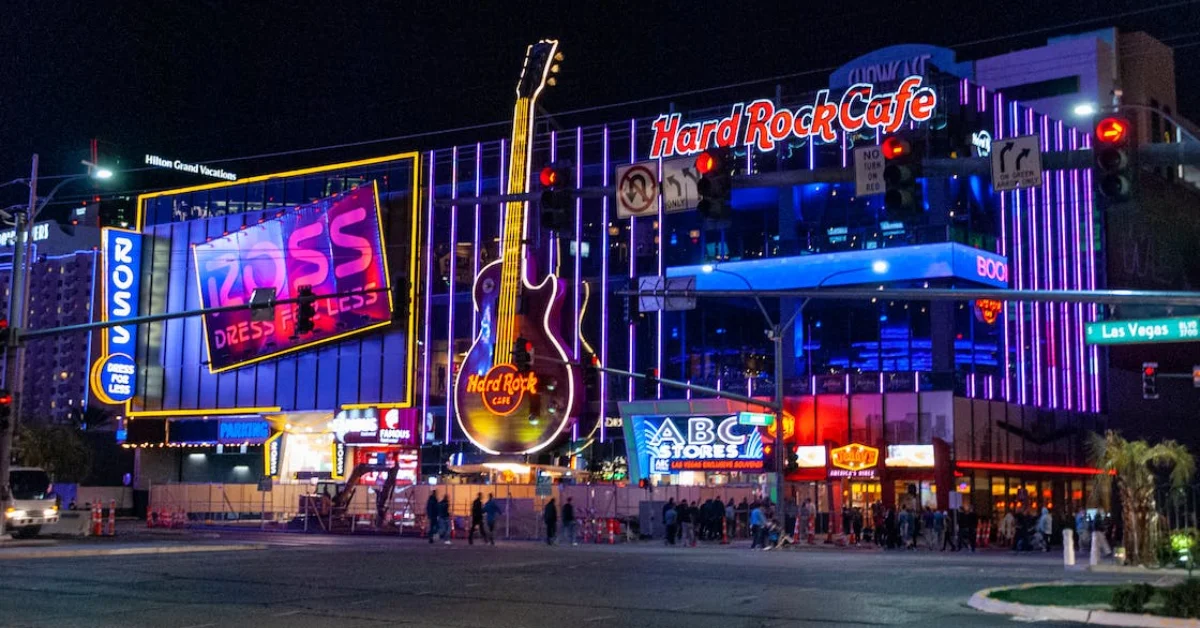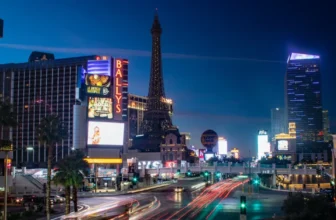
The dazzling city of Las Vegas is known as a place that never sleeps and is renowned as the ultimate entertainment destination for casinos and gambling.
But how did Vegas get its reputation?
Read on to discover the intriguing history of Sin City and its meteoric rise to becoming the casino capital of the world.
Early history of Las Vegas
Nestled in the heart of the Mojave Desert, Las Vegas started as a small railroad town in the early 1900s.
The area was originally inhabited by Native American tribes, including the Paiute people, who had been living there for thousands of years.
However, it wasn’t until the arrival of the railroad that the city began to take shape.
The construction of the San Pedro, Los Angeles, and Salt Lake Railroad brought an influx of people to the area, looking for work and opportunities. With the arrival of the railroad, Las Vegas became a stopover point for travelers, offering them a place to rest and refuel.
The city’s name, which means “the meadows” in Spanish, was derived from the oasis-like conditions found in the surrounding desert.
(Read More: Best Casino Resorts for Non-Gamblers to Enjoy)
The rise of gambling in Las Vegas
The transformation of Las Vegas began in 1931 when the state of Nevada legalized gambling. This move was partly motivated by the desire to generate revenue during the Great Depression.
The legalization of gambling opened the floodgates for entrepreneurs and visionaries to capitalize on the newfound opportunity.
One of the early pioneers of the Las Vegas gambling scene was Benjamin “Bugsy” Siegel, a notorious mobster with a vision.
Siegel saw the potential of Las Vegas and invested heavily in the construction of the Flamingo Hotel and Casino, which opened its doors in 1946.
With its luxurious accommodations, world-class entertainment, and high-stakes gambling, the Flamingo set the stage for the future of Las Vegas.
The construction of iconic Las Vegas casinos
The success of the Flamingo Hotel and Casino paved the way for the construction of other iconic Las Vegas casinos.
The opening of the Desert Inn in 1950 marked the beginning of an era of unprecedented growth and extravagance.
The Desert Inn was followed by other legendary resorts such as the Sands, the Stardust, and the Riviera.
These establishments were more than just places to gamble; they were symbols of luxury and excess. The casinos featured lavish decorations, extravagant shows, and the best entertainment money could buy.
Las Vegas became synonymous with opulence, attracting high rollers from around the world who were eager to try their luck at the gaming tables.
The impact of organized crime on Las Vegas
It is impossible to talk about the history of Las Vegas without mentioning the influence of organized crime.
In the early days, the mob had a significant presence in the city, with many casinos under their control. The mobsters saw Las Vegas as a lucrative business venture and used their connections to ensure their operations ran smoothly.
However, the tide began to turn in the 1960s when law enforcement agencies started cracking down on organized crime. The government’s efforts to clean up Las Vegas led to the decline of mob influence in the city.
The corporations that took over the casinos brought a more legitimate and professional approach to the industry, paving the way for the modern Las Vegas we know today.
The transformation of Las Vegas into an entertainment destination
As the influence of organized crime waned, Las Vegas underwent a transformation into a family-friendly entertainment destination. The city began to focus on attracting a wider audience, offering a range of attractions beyond just gambling.
Theme parks, roller coasters, and extravagant shows became a staple of the Las Vegas experience.
The opening of the Mirage in 1989 marked a turning point in the city’s evolution.
The Mirage introduced the concept of the mega-resort, combining luxurious accommodations with world-class entertainment. The success of the Mirage inspired other resorts to follow suit, resulting in a boom of construction activity on the Las Vegas Strip.
The influence of technology on Las Vegas casinos
With the advent of the internet and the rise of online gambling, Las Vegas faced new challenges.
The city had to adapt to changing consumer preferences and find ways to stay relevant in a digital age. The casinos embraced technology, offering online gaming options and integrating cutting-edge technology into their operations.
Virtual reality experiences, interactive displays, and mobile apps have become common features in Las Vegas casinos. These innovations have helped attract a younger demographic and keep the city at the forefront of the entertainment industry.
Las Vegas has embraced technology as a way to enhance the overall visitor experience, offering a seamless blend of virtual and physical entertainment.
Las Vegas today – the casino capital of the world
Today, Las Vegas is undisputedly the casino capital of the world.
The city attracts millions of visitors each year, drawn by the allure of endless possibilities and non-stop excitement. The Las Vegas Strip, with its iconic skyline and neon lights, continues to be the epicenter of the city’s casino industry.
The city’s reputation as a global entertainment hub has only grown stronger over the years. Las Vegas hosts some of the biggest and most prestigious events in the world, including boxing matches, concerts, and sporting events.
The city’s casinos offer an unparalleled gaming experience, with a wide range of options to suit every taste and budget.
Famous Las Vegas casinos and their contributions
Las Vegas is home to some of the most famous and iconic casinos in the world. Each casino has its own unique history and has contributed to the city’s reputation as a gambling mecca.
The Bellagio, with its stunning fountains and elegant design, is known for its high-end luxury and world-class poker tournaments.
The Venetian, inspired by the city of Venice, offers a taste of Italian romance and opulence.
Caesars Palace, with its Roman-themed architecture and grandeur, has been a Las Vegas icon since its opening in 1966.
These casinos have not only shaped the city’s skyline but also its cultural and economic landscape. They have become symbols of Las Vegas’ success and continue to attract visitors from around the world.
The casinos have also played a significant role in supporting the local economy, creating jobs, and generating revenue for the city.
Las Vegas as a cultural and historical phenomenon
The history of Las Vegas is a testament to human ambition and the power of reinvention.
What started as a small railroad town in the desert has transformed into a global entertainment capital.
Las Vegas has overcome numerous challenges and reinvented itself time and time again to stay relevant in a rapidly changing world.
Today, Las Vegas is more than just a city of bright lights and big dreams.
It is a cultural and historical phenomenon, a place where people come to experience the thrill of gambling, enjoy world-class entertainment, and create memories that will last a lifetime.
The history of Las Vegas serves as a reminder that with a little luck and a lot of determination, anything is possible.







